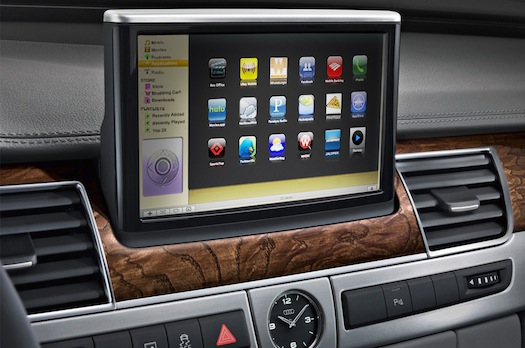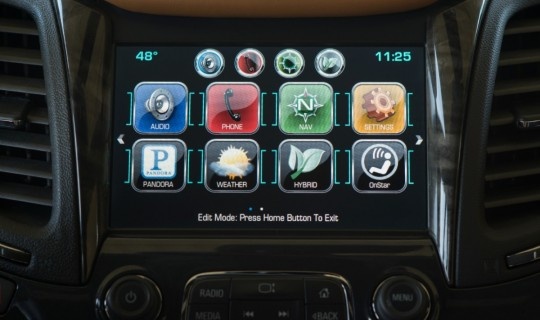A content war is coming to the dashboard of the car, writes Anthony Gherghetta in this special report for radioinfo.
For as long as anyone can remember, the car radio has owned it’s own little piece of real estate on the dashboard. Unfortunately for radio broadcasters, this monopoly position is starting to take on a bit of static.
We’re now in the era of the connected car. The space on the dashboard that was once reserved for the car radio has morphed into a digital gateway offering everything that the web has to offer.
In the connected car, AM, FM and DAB radio are now just apps like any other.
The dominance of traditional broadcast radio is no longer absolute as more and more cars are delivered connected to the Internet. This connection is delivered through the mobile phone, a mobile wifi device, or direct to the car itself. Broadcasters shouldn’t kid themselves, running an app in the car is now just as easy as turning on the radio.
Streaming services such as Spotify and Pandora have taken over the role of CDs in many cars. Now, there are new services that will start doing the same thing to broadcast radio.
The argument that there isn’t enough bandwidth on the mobile networks to support audio streaming is misguided and any broadcaster who thinks that DAB is going to protect them from online competition in the car is thinking wishfully. The phone networks are pretty good now and they will only get better.
So where does this leave traditional broadcasters?
The opportunities are huge for those broadcasters who can let go of the past and embrace the new technology. As everyone knows, radio is local. People listen to radio in the car for companionship and this is especially true during the morning and afternoon commute. The fundamentals of radio broadcasting wont be thrown out the window simply because there is new technology.
Broadcasters whose business model is based on ownership of spectrum alone will struggle in this new space. Broadcasters who are product focused will fare much better.
The connected car
Lets face facts. carmakers do not care about DAB radio. To them, DAB is old technology. In fact, this week the patent on DAB radio expired showing just how old the technology is.
Anyone who has been watching this space will know that the three main car manufacturers – Ford, Toyota and General Motors – see the future of the car as an always-on, always-connected device.
The Toyota Entune platform is an advanced dashboard system that allows users quick access to online streaming services such as Pandora, Spotify and Clear Channels’ iheartradio. Running these apps in a new Toyota vehicle is as easy as turning on the terrestrial radio.
Ford has developed their own platform called Ford Sync. This platform has recently been opened up to outside developers and hundreds of apps are being developed as we speak. A lot of these apps will directly compete with traditional radio.
Most of the manufacturers have realized that the mobile phone is key to the connection in the car. Most of the apps that we use in the car will run on the mobile phone itself with the head unit in the car acting as the main input/output device in the same way as the speakers, the keyboard and the mouse do on your home computer. Most of the processing will take place on the phone, not in the car dashboard.
This makes sense. Most cars will last 10 to 15 years whereas the mobile phone is in a relentless cycle of upgrades. It makes sense to have most of the processing performed on the phone.
What are traditional radio broadcasters to do?
Adapt.
It’s clear that car radio technology is changing and there is no chance of putting the genie back in the bottle. Broadcasters have to accept that one of the most lucrative media markets in Australia is about to experience massive disruption.
Most of the competition will come from the pure music plays such as Spotify and Pandora. Pandora now commands over 8% of all radio listening in the United States and more than 75% of Pandora listening is done on mobile devices – much of which is in the car.
However, here is where traditional broadcasters shine, Spotify and Pandora don’t know a thing about radio broadcasting. They certainly don’t understand the emotional connection that develops between the on air announcers and their listeners on the daily commute.
Radio is more than just music. Radio is information, entertainment and companionship.
What existing broadcasters need to do is find ways to create new content and repackage their existing content for the next generation of in car radio. Here, customization is key. Radio broadcasters need to be exploring and experimenting with new ways to deliver tailored programming to each individual listener. Just like Spotify and Pandora provide different music for each listener, radio broadcasters need to do the same with the spoken content.
Anthony Gherghetta will explore this topic further in two more reports over the next couple of weeks.
Part 2: How geo-location services will influence the next generation of car radio
Part 3: Monetizing the next generation of car radio
You can comment below
Press the ‘Login’ button to activate the comments box. You need to be signed in, but you don’t need to be a paid subscriber to post. Don’t forget to press ‘Submit’ at the bottom of the box when you finish writing.
 Anthony Gherghetta
Anthony Gherghetta
Anthony Gherghetta is the lead mobile development strategist at The App Studio in Melbourne, Australia.
Primarily responsible for the development of enterprise apps for clients such as Samsung and Pfizer, Anthony is now leading a team of developers on the next generation of car radio.
Email: [email protected]
Phone: 0400 587 808
Websites: www.anthonygherghetta.com and www.theappstudio.com.au


